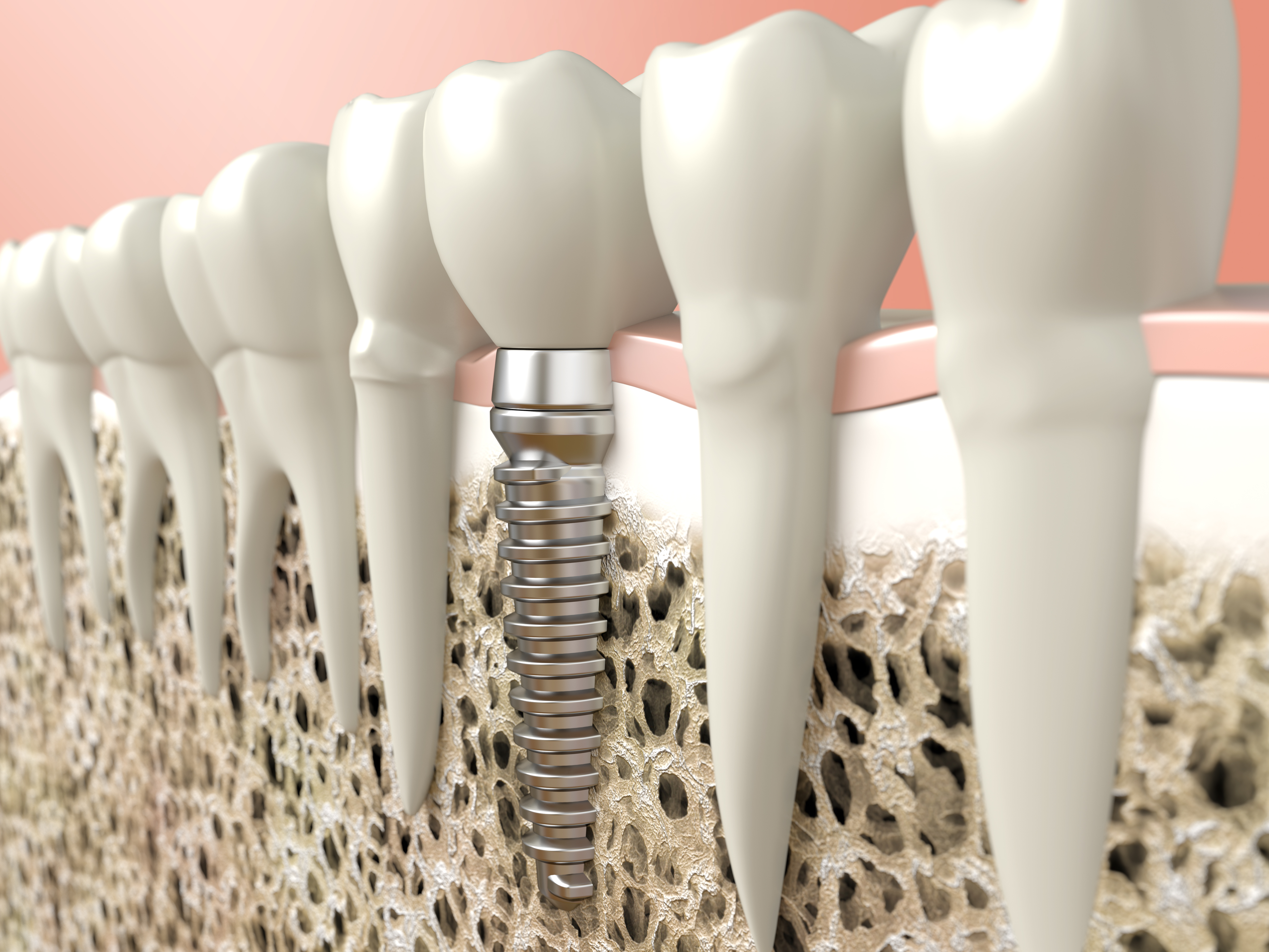Dental bone grafting in Ajax might sound dramatic, but it is commonplace and straightforward. It is often needed to prepare the jaw for dental implants.
What Is Bone Grafting?
A dental bone grafting Whitby is a procedure to increase the volume of strong, healthy bone in your jaw. An implant screw needs to be surrounded by a specific amount of bone so it can become successfully fused within the jawbone and is strong enough to hold a replacement implant tooth.
Why Would I Need a Dental Bone Graft?
When you visit Durham Dental Solutions for dental implant treatment in Pickering, one of the first things we will need to do is to take a cone beam CT scan.
The CT scan produces clear digital 3-D images of your jaws, allowing our dental implant dentist in Oshawa to quantify the amount of bone available for implant placement. We may recommend a dental bone graft if you do not have adequate bone to support implants.
How Can Jawbone Loss Occur?
There are various reasons why jawbone loss can occur or is inadequate to support implants, outlined below.
Periodontal Disease
Jawbone loss can occur if you have severe periodontal disease that can destroy gum tissue and the bone around your natural teeth. If you have periodontal disease, we must treat this first before we can carry out other procedures like bone grafting and dental implant placement in Courtice.
Near Your Sinus Cavities
The jawbone is naturally thinner in certain areas, such as just above your upper back teeth and close to the sinus cavities. In this case, we would recommend a sinus lift in Clarington, where the membrane between your sinus cavities and the jawbone is carefully lifted upwards to create space for more bone.
Jawbone Resorption after Tooth Loss
If you lost teeth some time ago, your jawbone may have begun to resorb naturally. This resorption occurs when natural teeth are removed, and the tooth roots can no longer stimulate your jawbone.
In this situation, the bony ridge that originally supported your teeth may have diminished, becoming flatter and narrower. We can provide bone grafting procedures that help increase the width or depth of your jawbone, ensuring plenty of bone for your dental implants in Clarington.
Tooth Socket Preservation
If you have teeth that are failing and need removing, we may suggest a socket preservation procedure. As your tooth is removed, we preserve the empty socket with bone grafting material in preparation for your dental implant. Sometimes, we may even be able to place the implant simultaneously.
Where does the Dental Bone Graft Come from?
The bone graft can come from a variety of different sources. It may be taken from another site in your body. We can also use donor bone, which is extensively tested and sterilized, so it is safe to use. Another solution is to use a synthetic material that closely replicates a natural bone.
What Is the Procedure for Bone Grafting?
The procedure is very straightforward, and if you feel anxious, we can always provide sedation dentistry in Brooklin to help you relax.
- After numbing your gum, we make an incision to expose the bone underneath.
- The bone grafting material is secured in place. We may place a special barrier over the bone graft to help it heal.
- Your gum is stitched closed, and the healing process will begin. We will provide clear instructions on caring for the bone grafting site during healing.
It can take several months for a bone graft to heal completely. During this time, the bone graft acts as a matrix, encouraging your body to produce new bone cells that will gradually replace it.


